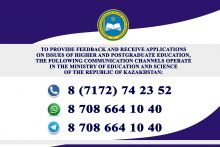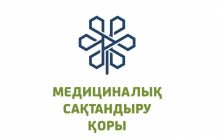Requirements for manuscripts,
submitted to the «Medicine and Ecology» journal
Attention! When submitting articles to the editors, authors should necessarily provide with detailed information (full name, place of employment, position, contact address, phone, E-mail) the information about three external reviewers, which can potentially be reviewers of the article. An important condition is the consent of nominees of the external reviewers on loner co-operation with the editorial board of the journal «Medicine and Ecology» (the order and conditions of reviewing detailed in the part «Instruction to Reviewers» on the website of the journal). The presentation of the list of potential reviewers by the authors is not a guarantee that their article will be sent for candidates recommended by them. The information about the reviewers must be placed at the end of section «Conclusion» in the article text.
1. General information
In the journal «Medicine and Ecology» the published articles are concerned with the different problems of clinical, practical, theoretical and experimental medicine, history, organization and health economics, ecology and health, issues of medical and pharmaceutical education. Manuscripts may be submitted in the following formats: a review, original article, observation from the practical experience and editorial (usually at the invitation of the editorial board).
The presented material must have been original and have not been previously published. If any violation of this provision (duplicate publication, plagiarism, etc.), the editors reserve the right to refuse all the coauthors in the further cooperation.
The total length of the original article (including references, abstracts, tables and figure captions) should not exceed forty (40) thousand characters. The length of literature reviews is not limited.
Depending on the type of manuscript the length of illustrative material is limited. In particular, original articles, reviews and lectures are illustrated by not more than three figures and three tables. Manuscripts that have non-standard structures can be submitted for consideration after prior approval from the editors of the journal.
The articles shall be performed in accordance with the requirements below. Manuscripts that are not performed in accordance with the requirements of the journal and also published in other journals will not be accepted.
The editors recommend authors to prepare their manuscripts according to the Uniform Requirements for Manuscripts of the International Committee of Medical Journal Editors (ICMJE). The full compliance with the specified requirements will speed up the consideration and publication of the articles in the journal.
The authors are solely responsible for the content of materials submitted to the editors, including the availability of information, violating the regulations of international copyright, patent or other types of rights of any natural or legal persons. Submission of manuscripts by authors to the journal «Medicine and Ecology» is a confirmation of guaranteed lack of the above violations. In the event of third party claims to the published author’s materials in the journal, all disputes are settled in accordance with the legislation between the authors and the prosecution, however, there is no removal of the material from the published printed edition, but it possible to remove it from the electronic version of the journal under the condition of full compensation for the moral and material losses caused by the authors to the editorial staff.
The editors reserve the right to edit articles and change the writing style, which are not affecting the content. In addition, the editors reserve the right to decline manuscripts that are not meeting the journal level, return manuscripts for revision and/or reducing volume of the text. The editors may request from the authors the submission of the original data, with the using of which the results described in the article were obtained, for the reviewer’s assessment the degree of consistency of the original data and the content of the article.
When submitting a manuscript to the journal author transfers the exclusive property rights to the using of the manuscript and all the related supporting materials, including the presentation in print and in the Internet, the translation of the manuscript into foreign languages, etc. The author conveys these rights to the editors for an unlimited period and in all countries of the world without exception.
2. The procedure for manuscript submission to the journal
The procedure for manuscript submission to the journal consists of two steps:
1) submission of the manuscript to the editor for consideration the possibility of publication by e-mail Serbo@qmu.kz together with the scanned copies of all supporting documentation, in particular the direction of the cover letter.
2) submission in the printed form (by mail or in person) of the supporting documentation to the previously submitted article, after the decision of the editors to publish it.
The following documents should be submitted in a printed (original) form to the editorial staff:
1) a one copy of the first page of the manuscript, with certification of the head of institution or department and stamped by institution;
2) a direction of the institution to the journal;
3) a cover letter signed by all the authors;
The cover letter to the article should contain:
1) a statement that the article is read and approved by all the authors, all the requirements are fulfilled and all the authors are confident that the manuscript really reflects the work;
2) a name, address and telephone number of the author responsible for correspondence and connection with other authors on matters relating to the processing, correction and final approval of trial version of the article;
3) an information about the article: the type of manuscript (original article, review, etc.); the number of printed characters with spaces, including references, abstracts, tables, figure captions, indicating details on the number of printed characters in the following sections: text of the article, abstract (rus), abstract (eng); the number of references in the bibliography of literature; number of tables; number of pictures;
4) conflict of interests. It is necessary to specify the sources of the creation of the manuscript funding and previous to it research: organizations, employers, sponsors, commercial interests in the manuscript of legal persons and/or individuals, objects of patent or other rights (excluding author’s right);
5) full names of all authors of the article.
Examples of these documents are presented on the journal’s website in the «Authors» section.
Manuscripts that have non-standard structure, which does not fulfill the requirements of the journal, may be submitted for consideration by e-mail Serbo@qmu.kz after prior coordination with the editorial staff. To obtain permission from the editorial staff for submission a manuscript, it is necessary to submit a reasoned request to the editor indicating the reasons for impossibility to fulfill the basic requirements for manuscripts specified in the journal «Medicine and ecology». If the authors within two weeks from the date of submitting the article did not get a response – a letter was not received by the editorial staff and it is necessary to repeat sending.
3. Requirements for manuscripts
The compliance will enable authors to properly prepare the manuscript for submission to the editorial staff. The models of the manuscripts are presented on the journal’s website in the «Author» section.
3.1 Technical requirements for manuscripts texts
The articles are accepted in Kazakh, Russian and English languages. When submitting an article written entirely in English, the presentation in the article of Russian translation of the title, names of the authors and abstracts are not required.
The text of the article should be typed in Microsoft Office Word program (RTF and DOC files), font Times New Roman, size 14 pt, black, full justification, line spacing – two lines. The page margins above, below and right – 2,5 cm, left – 4 cm. Pages should be numbered consecutively starting with the title, the page number should be printed in the lower right corner of each page. The final version of the manuscript should be maintained on electronic media; the file should be saved in a text editor Word or RTF, and called by the name of the first author.
There are no spaces between paragraphs. The first line has an indentation of 10 mm. The font for captions and text tables should be Times New Roman, size 14 pt. Units of measurements of the different values and also the clipping should be preceded the sign of non-breaking space (see. «Insertion-Symbols»), preventing their separation during the making-up from the defined numbers or words. The same applies to the typing of initials and surnames. When using the quotation marks in the text there are the so-called typographical quotation marks («») applied. The dash is denoted by «–»; the hyphen – «-».
The first page includes UDC (required), the article type (original articles, reviews, etc.), title of the article, full names of all authors with the full official name of the institution of employment and its departments, positions, academic titles and degrees (if any), the complete contact information of the responsible author (surname, first name and middle name of the contact author is pointed in a full form!) is presented separately. The title of the article, names of authors and the information about them (place of work, position, academic title or degree) should be presented in three languages — Kazakh, Russian and English.
Authors’ data entry format: initials and surname of the author, the full official name of the organization and the work place, department, position, academic title, academic degree (all applicable positions is separated by commas). The data about each author except the last one should end necessarily with a semicolon.
3.2 Preparation of the manuscript text
The articles about the research results (original articles) should contain the following sequential sections: «Abstract» (in Russian, Kazakh and English languages), «Introduction», «Objective», «Materials and Methods», «Results and Discussion», «Findings», «Conclusion», «Conflict of interest», «References». The articles of another type (reviews, lectures, observations from the practice) may be made in a different manner.
3.2.1 The title of the manuscript
The title should reflect the main objective of the article. For the most cases the length of the title text is limited to 150 characters with spaces. The need to increase the number of characters in the manuscript title further should be agreed with the editorial staff.
3.2.2 Abstract
The abstract (in Russian, Kazakh and English languages) should provide an understanding of the main ideas of the article. When submitting the material to the editor, written in the genre of review, lectures, observation from the practice one may present the unstructured abstract with description of the main results and conclusions of the article. The volume of unstructured abstract should not be less than 1000 characters with spaces. For the original articles on the research results of the study the abstract should be structured and include the following sections: «Objective», «Materials and Methods», «Results and Discussion», «Findings», «Conclusion». Abstract should be not less than 1000 and no more than 1500 characters with spaces. Before the main text of the abstract it should be the repetition of the authors and title of the article (in the number of signs is not included). At the end of the abstract it should be specified not more than five keywords. It is advisable to use the common terms of keywords reflected in the controlled medical vocabularies, for example, http://www.medlinks.ru/dictionaries.php
3.2.3 Introduction
The introduction reflects the main essence of the described problem and contains the short analysis of the main references on the problem. At the end of the section it is necessary to formulate a main objective of the work (for articles on the results of research).
3.2.4 Objective of the work
After the «Introduction» section the main objective of the article is described that should be clearly defined. It is forbidden to use abbreviations in the wording of the objective of the article.
3.2.5 Materials and methods
This section should be provided with the information on the organization of research, object of research, study population, inclusion/exclusion criteria, methods of research and processing of the collected data. It is obligatory to specify the criteria of distribution of objects of the research for groups. It is necessary to describe in detail the used and diagnostic equipment with the indication of its main technical characteristics, the name of sets for hormonal and biochemical researches, with the indication of normal values for separate indicators. When using the standard methods of research it is necessary to give the corresponding literary references; to specify exact international names of all the used drugs and chemicals, doses and methods of administration (routes of administration).
The participants of research have to be acquainted with the objectives and basic provisions of research and then they have to sign the written consent for participation. The authors have to provide the details of the above procedure at the description of the protocol of research in the «Materials and Methods» section and specify that the Ethical committee has approved the protocol of research. If procedure of research includes radiological experiences, it is best to provide their description and doses of an exposition in the «Material and Methods» section.
The authors submitting reviews of literature have to include the section in which the methods used for finding, selection, obtaining information and synthesis of data are described. These methods also have to be given in the abstract.
The statistical methods need to be described in details that the competent reader that have access to basic data could check the obtained results. If possible, the obtained data have to be subjected to a quantitative assessment and are submitted with the corresponding indicators of measurement errors and uncertainty (such as confidence intervals).
The description of procedure of the statistical analysis is the integral component of the «Materials and Methods» section, at the same time the statistical data processing should be considered not as auxiliary but as the main component of the research. It is necessary to provide the full list of all used statistical methods of the analysis and hypothesis tests. The use of phrases such as «the standard statistical methods were used» without their specification is not permissible. The accepted in this research critical significance level «р» is in any indicated (for example: «The critical significance level when checking the statistical hypotheses was accepted as equal 0,05»). In each case it is desirable to specify the actual size of the reached significance level «р» for the used statistical criterion. Besides, it is necessary to specify the specific values of the received statistical criteria. It is necessary to give definition to all the used statistical terms, abbreviations and symbolical designations, for example, M – a selective average, m – an average error, etc. Further it is necessary to specify the volume of the study sample (n) in the text of article, used for calculation of statistical criteria. If the used statistical criteria have restrictions on their application, it is necessary to specify how these restrictions were checked and what results of these checks (for example: the distribution normality fact was confirmed when using parametrical methods of statistics). It is necessary to avoid the use of the unspecific terms that have several meanings (for example: there are several options of correlation coefficient: Pearson, Spearman, etc.). Average sizes shouldn't be given more precisely, than on one decimal sign in comparison with the basic data. If the analysis of data was made with use of the statistical software package, it is necessary to specify the name of this package and its version.
3.2.6 Results and discussion
In this section the results of the conducted research supported by illustrative material (tables, pictures) are described. All the data from tables or pictures in the text should not be repeated; it is necessary to allocate and summarize only important observations. The expressions of author’s opinion, interpretation of the received results and also references to works of other groups of authors aren’t permitted.
At discussion of results of research it is allowed to use references to works of other groups of authors. It is necessary to allocate new and important aspects of research, and also conclusions from them. In the section it is necessary to discuss a possibility of application of the received results including in further researches, and also their restrictions. It is necessary to compare the observations of authors of the article to other researches in this field and to connect the made conclusions with research objectives, however it is necessary to avoid the «incompetent», unfounded allegations and conclusions which aren't supported by facts. In particular, authors shouldn't make any statements concerning an economic benefit and cost if the relevant economic data and analyses aren't presented in the manuscript. It is necessary to avoid claims for a priority and references to work which isn't finished yet. The formulation of new hypotheses should be made only in a case when it is justified, but should be designated accurately that it is only hypotheses. This section can also include informed recommendations.
3.2.6 Findings
This section can be written in the form of the general conclusion, or in the form of the concretized conclusions depending on specifics of the article.
3.2.7 Conclusion
Conclusions have to be numbered, accurately formulated and should follow the set goal.
3.2.8 Conflict of interests
In this section it is necessary to specify any financial relationship which is capable to lead to the conflict of interests in connection with the material presented in the manuscript. If there is no conflict of interests, it should be written the following: «There is no a conflict of interests».
It is necessary to specify the work financing sources. The main sources of financing have to be specified in the title of article in the form of the employer-organizations concerning authors of the manuscript. It is necessary to specify the type of financing by the employer-organizations in the text, and also if necessary to provide information on the additional sources: sponsorship (grants of various funds, commercial sponsors).
The commercial interest of certain natural and/or legal entities in results of work, the presence in the manuscript of patent object descriptions or any other type of the rights (except author's) are also specified in this section (if applicable).
For more information on the concept «Conflict of interests» read the Uniform requirements to manuscripts of the International Committee of Medical Journal Editors (ICMJE).
3.2.9 Acknowledgements
This section isn't obligatory, but its existence is desirable (if applicable).
All participants who don’t meet the criteria of authorship have to be listed in the section «Acknowledgements». The gratitude should be expressed to the persons who are carrying out the technical support, assistants in writing of article or the head of the department providing the general support. Also it is necessary to express gratitude for financial and material support. Groups of persons participating in work but whose participation doesn't answer criteria of authorship can be listed as: «clinical researchers» or «participants of research». Their function has to be described as, for example: «they participated as scientific consultants», «they critically estimated the research objectives», «they collected the data» or «took part in treatment of the patients included in research». As readers can form their own opinion on the basis of the submitted data and conclusions, these persons have to give the written permission for being mentioned in this section (the volume should be no more than 100 words).
3.2.10 References
For original articles the list of references is recommended to be limited to 10 sources. For the preparation of review articles it is recommended to limit references to 50 sources. The references for the last 5-10 years, except for fundamental references have to be described.
References to the literature have to be designated by the Arab figures and be specified in square brackets.
The reference to the article should be formed in alphabetical order and made out according to All Union State Standard 7.1-2003 «Bibliographic record. Bibliographic description. General requirements and rules for making a reference list».
3.2.11Graphic material
The volume of graphic material should be necessary minimum. If pictures have been published earlier, it is necessary to specify an original source and to submit the written permission for their reproduction from the right holder of publication. Permission is required irrespective of authorship or the publisher, except for the documents which aren't protected by copyright.
The pictures and schemes should be submitted in electronic form in JPEG, GIF or PNG (a resolution is 300 dpi). The pictures can be presented in various color options: black-and-white, shades gray, color. Color pictures will be presented in color execution only in the electronic version of the journal, in the printing version they will be published in shades of gray. Micrographics should have tags of internal scale. The symbols, shooters or letters used in micrographics have to be contrast in comparison with a background. If photos of people are used, these people shouldn't be recognizable, or it is necessary to attach to such photos a written permission for their publication. The change of a format of pictures (high resolution, etc.) will be coordinated previously with editorial staff. The editors reserve the right to refuse placement in the text of article of pictures of non-standard quality.
The pictures have to be numbered consistently according to the order in which they are mentioned in the text. The pictures’ captions are prepared in the order of pictures’ numbering.
3.2.12 Tables
The tables should have title and accurately designated columns convenient for reading. The font for the text of tables has to be Times New Roman, a size not less 10pt. Each table is printed through the single line space. Photo tables aren't accepted.
The tables should be numbered consistently in the order of their first mention in the text. The short name of each of them should be given. Each column in the table should have a short title (it is possible to use abbreviations). All the explanations should be placed in notes (footnotes), but not in the name of the table. It should be specified what statistical measures were used for reflection of variability of data, for example a standard deviation or an error of average. Be sure that each table is mentioned in the text.
3.2.13Measurement units and abbreviations
The measurements are given on the SI system and a scale of Celsius. The abbreviations of separate words, terms, except standard, aren't allowed. All the entered abbreviations are stood completely at the first mention in the text of article with the subsequent indication of abbreviations in brackets. The abbreviations shouldn’t be used in the title of article and in the abstract.


















































